
Tarlac is a landlocked province located in the Central Luzon region of the Philippines. It is bounded on the north by the province of Pangasinan, Nueva Ecija on the east, Zambales on the west and Pampanga in the south. The province comprises three congressional districts and is subdivided into 17 municipalities and one city, Tarlac City, which is the provincial capital.

Central Luzon, designated as Region III, is an administrative region in the Philippines, primarily serving to organize the 7 provinces of the vast central plains of the island of Luzon, for administrative convenience. The region contains the largest plain in the country and produces most of the country's rice supply, earning itself the nickname "Rice Granary of the Philippines". Its provinces are: Aurora, Bataan, Bulacan, Nueva Ecija, Pampanga, Tarlac and Zambales.

Camiling is a first-class urban municipality of the province of Tarlac in the Philippines. According to the 2015 census, it has a population of 83,248 people.

Bautista, officially the Municipality of Bautista, is a 4th class municipality in the province of Pangasinan, Philippines. According to the 2015 census, it has a population of 32,307 people.

Bayambang, officially the Municipality of Bayambang, is a 1st class municipality in the province of Pangasinan, Philippines. According to the 2015 census, it has a population of 118,205 people.
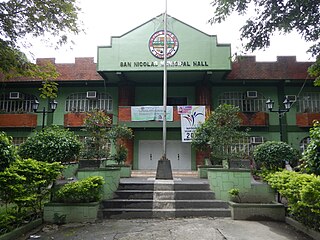
San Nicolas, officially the Municipality of San Nicolas, is a 1st class municipality in the province of Pangasinan, Philippines. According to the 2015 census, it has a population of 35,574 people.

Anao, officially the Municipality of Anao, is a 5th class municipality in the province of Tarlac, Philippines. According to the 2015 census, it has a population of 11,528 people.

Capas is a first class highly urbanized municipality in the province of Tarlac, Philippines, and one of the richest towns in the province. The town also consists of numerous subdivisions and exclusive villages.

Gerona, officially the Municipality of Gerona, is a 1st class municipality in the province of Tarlac, Philippines. According to the 2015 census, it has a population of 87,531 people.

Moncada, officially the Municipality of Moncada, is a 1st class municipality in the province of Tarlac, Philippines. According to the 2015 census, it has a population of 57,787 people.
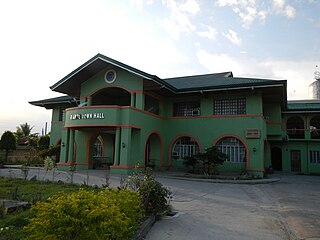
Ramos, officially the Municipality of Ramos, is a 5th class municipality in the province of Tarlac, Philippines. According to the 2015 census, it has a population of 21,350 people. It was formerly named Bani, a barrio of the town of Paniqui from 1878 to December 31, 1920. On January 1, 1921, Bani became a town and was renamed "Ramos" in memory of Gov. Alfonso Ramos who first initiated the creation of the town.

San Clemente, officially the Municipality of San Clemente, is a 5th class municipality in the province of Tarlac, Philippines. According to the 2015 census, it has a population of 12,657 people.
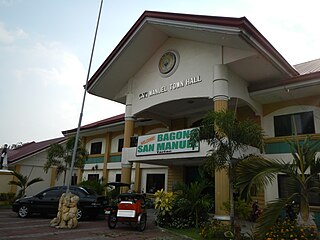
San Manuel, officially the Municipality of San Manuel, is a 4th class municipality in the province of Tarlac, Philippines. According to the 2015 census, it has a population of 25,504 people.

Tarlac City, officially the City of Tarlac, is a 1st class city and capital of the province of Tarlac, Philippines. According to the 2015 census, it has a population of 342,493 people.

Victoria, officially the Municipality of Victoria, is a 2nd class municipality in the province of Tarlac, Philippines. According to the 2015 census, it has a population of 63,715 people.
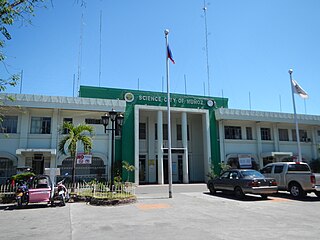
Muñoz, officially the Science City of Muñoz, is a 4th class city in the province of Nueva Ecija, Philippines. According to the 2015 census, it has a population of 81,483 people.
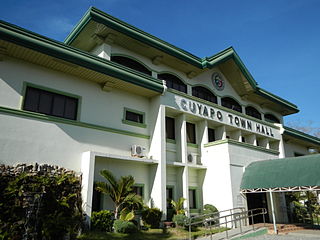
Cuyapo, officially the Municipality of Cuyapo, is a 1st class municipality in the province of Nueva Ecija, Philippines. According to the 2015 census, it has a population of 65,039 people.

Nampicuan, officially the Municipality of Nampicuan, is a 5th class municipality in the province of Nueva Ecija, Philippines. According to the 2015 census, it has a population of 14,954 people.
The legislative districts of Tarlac are the representations of the province of Tarlac in the various national legislatures of the Philippines. The province is currently represented in the lower house of the Congress of the Philippines through its first, second, and third congressional districts.

The Province of Tarlac held its local elections on Monday, May 13, 2019, as a part of the 2019 Philippine general election. Voters selected candidates for all local positions: a town mayor, vice mayor and town councilors, as well as members of the Sangguniang Panlalawigan, the vice-governor, governor and representatives for the three districts of Tarlac. In the gubernatorial race, Tarlac's incumbent Governor Susan Yap ran unopposed for Governor while incumbent Vice-Governor Carlito David defeated former Vice-Governor Pearl Pacada in a rematch of the 2016 elections.
























